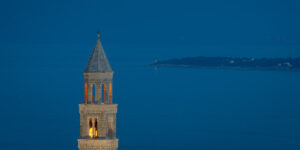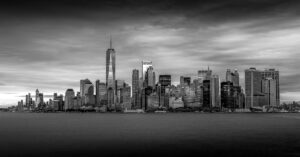Have you ever had a great idea for a photo? The story usually goes like this: you do your research, check the planning apps and weather forecasts, and it looks like tomorrow might be the perfect day. You wake up early and resist the temptation to stay in bed – even on vacation. You pack your gear and take a long walk (or drive) to arrive at your location before sunrise. You beat the crowds and other photographers to choose the best spot and set up your tripod. You wait patiently for the sun to light up the clouds from below, and all your hard work pays off with a fantastic photo.
Except, it often isn’t like that – at least the last part.
First of all, this is not a whine about the weather. Every landscape photographer quickly learns to accept that weather can never be fully predicted. Often, a distant cloud on the horizon covers the sun during the critical 5 minutes, and a scene never develops as you hoped. Sometimes you discover something different but still beautiful, and sometimes nothing works out, but this is the par for being a photographer. There could never be a guarantee of success when you depend on the weather.
Last minute discoveries of unexpected man-made objects are much more disappointing. For my type of photography, cranes, scaffolds, trucks, and other construction equipment are the worst. I know, in theory there are no bad subjects, just more or less creative photographers, and everything can be part of an interesting composition. In practice, it’s extremely tough to represent the atmosphere of an old city with a crane in front of its iconic buildings.
My hometown, Zagreb, is especially problematic as it is recovering from the earthquake that happened a few years ago. For a while, I considered a series called “A Wounded City,” in which I wanted to contrast the atmosphere of the city center and numerous construction sites, but I gave up on the idea. As much as I tried, I couldn’t bring myself to like the results and compositions spoiled by construction equipment and colorful logos. Fortunately, I’m in Zagreb often, so I can plan photos for when the city’s wounds heal.
But I was in Florence for one morning only. The view from Piazzale Michelangelo, this article’s featured image, is famous and I wanted to capture it myself. As everyone regularly photographs it, I couldn’t realistically expect to create a unique masterpiece, but it is a beautiful view, and I was expecting a fitting photo. However, arriving there after a long early morning walk, I realized there was a crane that completely ruined the picture. And, no, I could not have found a position where it would be out of the frame with a similar wide-angle composition.
Super disappointing. And a relatively common situation, I may add.
So, what can you realistically do in such a case?
You can, for example, be disheartened or upset with yourself because you didn’t prepare well enough to spot the crane the evening before and avoid all the hassle. You could also conclude that the photo likely would not have been remarkable anyway, as the sky wasn’t as beautiful as the forecast indicated. Finally, you could give yourself a solid reason to be critical and conclude that the trip failed to achieve its main objectives, didn’t have the expected impact on your photographic progress, and therefore was a failure. In short, you could give yourself an “impact analysis” of a typical corporate performance review. 😏
Or
You could enjoy the fact that you had a superb early morning walk in one of the world’s great cities and managed to take a few different but excellent shots later on. You could also use it as a motivation to keep learning and, for example, practice advanced retouching to remove the crane in Photoshop.
Obviously, I picked the second option. Indeed, it was a fantastic morning walk which I managed to crown with excellent brioches I bought for breakfast with my girls. In addition, I had a fun evening exercise removing the crane a few weeks later to get the featured image and a topic for this article.
BTW, as impressive as it is, the new and often talked about Photoshop’s Generative AI can’t yet do it properly. It can replace the crane with something feasible, but it looks nothing like Ponte Vecchio. AI will surely get there soon, but it is not there yet. An experienced Photoshop operator with the clone stamp tool and a pen is still the most versatile option for advanced retouching tasks.
Disappointments will happen to you in photography. Often. The more you prepare and invest in a particular idea, the bigger the disappointments will be when things don’t turn out as expected. However, staying positive and creative will often be rewarded in ways you didn’t expect. Sometimes with even a better photo than you initially envisioned.
So, accept the unpredictable nature of photography as an indispensable part of the experience and always decide to go out and try. The only thing you can count on is that you will never be pleasantly surprised if you choose not to try at all.
I have a strong feeling that the previous chapter applies well to other areas that you might be trying to learn.





